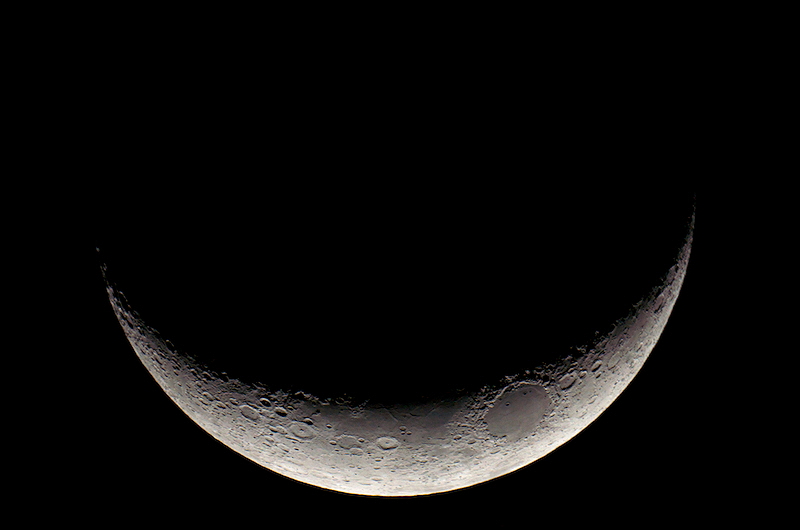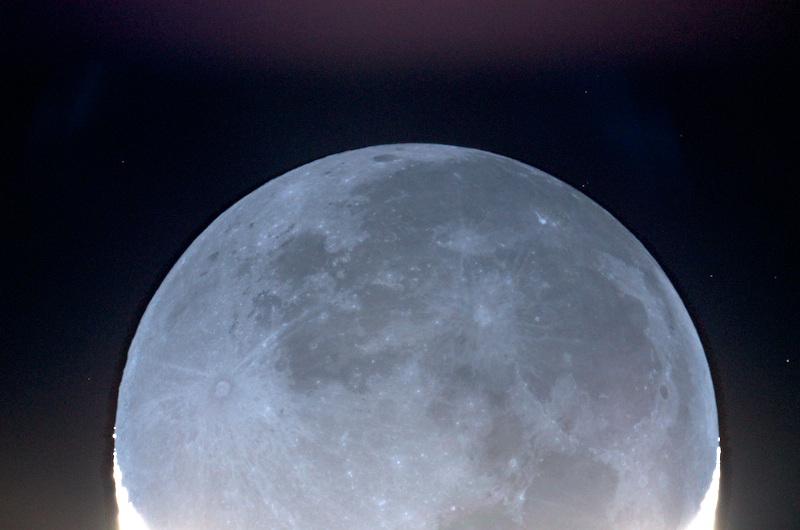
Mercury, Moon, More Earthshine
Posted: 14 February 2013
The observatory was opened Wednesday, 13 February 2013, at 1807 MST, 61°F. The sky was clear. At 1815 MST, viewed Mercury, low in the western sky, 77X and 222X. The planet showed a distinct nearly "half-phase". I set up for iPhone afocal imaging, 231X, using the MX-1 adapter on the 8" LX200-ACF. By the time I was ready for imaging, Mercury was low enough to show lots of atmospheric distortion. I did video recordings with the Camera app. Mercury overexposed on the video so I added a moon filter. That helped reduce the brightness of the planet. This is one of the frames from a video recording, 231X, moon filter, upscaled 200% and desaturated:

Beginning at 1836 MST, I did some lunar observing, 77X and 222X. There were nice views in the 2" 9mm 100° eyepiece, especially in the north pole region. I switched to the visual back and began preparing for D7000 DSLR imaging at the 8" prime focus. This is a 1/250sec, ISO 640, image:

North is at the right in the image above.
I then took several images at various exposure lengths and ISO settings in order to capture the Earthshine. This image was taken using the "Hat Trick" Method, ISO 500:

I added a 2X Barlow Lens at prime focus and captured this image of the north pole region, Hat Trick, ISO 500:

I ended lunar imaging at 1908 MST and resumed observing the moon, 364X and 727X. There were surprisingly good views along the terminator at 727X, even though that exceeded the 400X theoretical maximum magnification for an 8" telescope. I switched to the 2" 9mm 100° eyepiece (222X) for some nice viewing of details on the moon. Unfortunately, by 1947 MST, seeing had deteriorated somewhat, forcing me to return to 77X magnification.
At 1952 MST, slewed to Jupiter, near the zenith. With 77X, three moons were easily seen with a fourth moon visible very near the planet's limb, about to go behind the planet. Switched to 222X and monitored the moon. It disappeared behind the planet about 3 minutes after I started observing it.
The observatory was closed at 2013 MST, 41°F.
Reminder: I will be attending the Astronomy Magazine Event this Saturday, 16 February, in Tucson, Arizona. I'll be wearing a Mighty ETX Site cap.
Comments are welcome; use the Comments section below, or you can Email Me. Thanks.
Go to the previous report.
Return to the Cassiopeia Observatory Home Page.